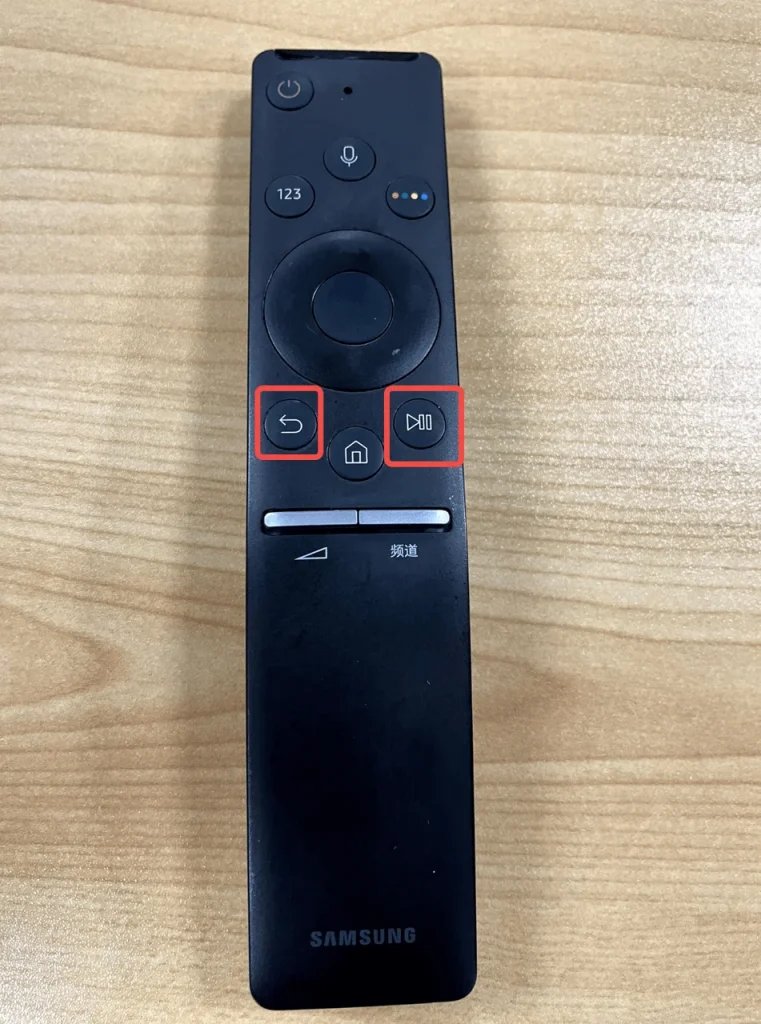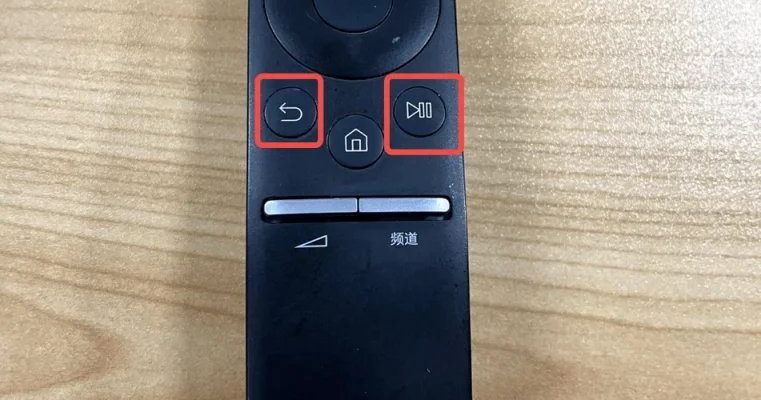
Honestly, the whole process is a lot less intimidating than it might seem. If you’re picturing a complicated tangle of codes and secret handshakes, you can breathe easy. Most of the time, you’re just matching up codes, pushing a few buttons in the right order, and voilà—suddenly, you’re controlling volume and power from one remote like some kind of home theater wizard. Of course, it helps to know which buttons to push and what to do if things get stubborn. That’s what I’m here for: slow, clear, no-BS advice.
Understanding How Samsung Soundbar Remotes Work With Older TVs
Let me explain: the magic behind programming a Samsung soundbar remote for older TVs usually comes down to something called “IR” or infrared. Think of IR like a flashlight—when you press a button, the remote sends out an invisible beam of light that your TV sees (assuming they both speak the same “language”). Now, here’s the catch: older TVs don’t always “speak Samsung” out of the box. You need to teach your soundbar remote the right code, so it knows how to get your TV’s attention.
Most Samsung soundbar remotes have a few basic functions built-in, but controlling an older TV? That often needs a little extra help. Some remotes have “universal” capabilities, which means they can be programmed (with a code or “learning” mode) to control non-Samsung devices. This is super useful—especially if your TV is pre-smart TV era and doesn’t automatically detect devices over HDMI.
It’s worth mentioning that every TV and remote can have its own quirks. You might find that your remote controls the volume perfectly but stubbornly refuses to power the TV on or off. Don’t stress. A bit of persistence—and the occasional battery swap—can work wonders. Remember, tech from different decades playing together is always a little unpredictable, but that’s also half the fun.
Finding the Right Code For Your TV Brand
You might be wondering, “Where do I even find these magical codes?” That part can feel a bit like hunting for treasure, but Samsung’s support site is often the first port of call. Most soundbar remotes that support universal pairing come with a list of codes for different TV brands. If you lost the leaflet (who keeps those anyway?), a quick search online with your TV brand and model usually does the trick. Just search for something like “Samsung soundbar remote code for [Your TV Brand]” and there’s a good chance you’ll find it.
Here’s the process most people follow:
- Grab the code list for your TV brand (or try the most common ones if you can’t find the exact model).
- Write down several codes, in case the first doesn’t work.
- Be patient—sometimes it takes a few tries to get the right one.
I’ve spent more time than I’d like to admit punching in codes on various remotes. The good news? There’s really no way to “break” anything by trying the wrong code. Worst case, you just have to try again. And if you feel like you’ve entered a maze of codes with no exit, don’t forget: there’s always the old-fashioned way—using separate remotes for each device. But where’s the fun in that?
Step-By-Step: How To Program Your Samsung Soundbar Remote
Alright, let’s get practical. Here’s how to program your Samsung soundbar remote for an older TV, assuming you have one of the remotes that support TV control (look for a “TV” or “Source” button, sometimes hidden right on the top row).
- Start with fresh batteries in your remote. Seriously, nothing derails a pairing session faster than half-dead batteries. Trust me on this one.
- Point the remote at your TV, stand about 5–10 feet away—close enough for a good signal, but not so close you’re blocking the sensor.
- Press and hold the “TV Power” and “Source” buttons at the same time, until the LED blinks. This puts your remote into pairing mode.
- Enter the code for your TV brand. The LED usually blinks again to say, “Hey, thanks—I got it.”
- Test it out. Try the power, volume, and input buttons. If something isn’t working, repeat the process with a different code.
If this sounds a bit old-school, that’s because it is! But it’s tried and true. Some remotes (like the ones with “learning mode”) let you point your old TV remote at the soundbar remote to “teach” it directly—like a Hollywood sensei, just less dramatic. Check your remote’s manual to see if you’ve got this feature, or if you’re strictly on the code path.
Troubleshooting Common Programming Problems
Here’s where reality sets in: sometimes things don’t work on the first try. Don’t panic. If your Samsung soundbar remote refuses to cooperate with your old TV, double-check these basics.
- Batteries: Weak batteries are the silent saboteurs of remote control success. Swapping them out is faster than an angry Google search.
- Line of Sight: Make sure nothing is blocking the remote’s IR sensor—no stacks of magazines, no sleeping pets, no mysterious household clutter.
- Correct Code: If the TV won’t respond, try the next code for your brand. Even TVs of the same brand sometimes need different codes—it’s not you, it’s them.
- Reset the Remote: Some Samsung soundbar remotes have a reset combo (like holding Power + Volume Down for 10 seconds). This wipes any old codes and lets you start fresh.
Still stuck? Sometimes older TVs just don’t play well with newer remotes—especially if they use super-specific IR codes from the early 2000s. In that case, a universal remote might be your best bet (or just keep that TV remote nearby for the one thing your soundbar version won’t do).
Comparing Samsung Soundbar Remotes With Universal Remotes
Let’s be real: not all remotes are created equal. Samsung soundbar remotes do a great job for basic TV control, but they’re not full-blown universal remotes. Universal remotes, like the classic Logitech Harmony or affordable GE models, are like Swiss Army knives—designed to wrangle everything from ancient VCRs to modern streaming sticks.
The upside of using your Samsung soundbar remote is simplicity: one remote, fewer headaches, less couch clutter. But if you want total, no-limits control over every gadget under your TV, a universal remote might be worth the upgrade. They usually support more advanced codes and can often sync with even the weirdest, oldest devices.
I’ve met folks who swear by their universal remote for every setup, while others are happy with the basics. For most, if the Samsung soundbar remote can handle volume and power, you’re golden. Unless you want to get fancy and control lighting scenes or coffee machines (yeah, some universal remotes do that), stick to what feels simplest.
Resetting And Re-Pairing When Things Go Haywire
You know that feeling when your remote was working fine and then—bam—it stops out of nowhere? It’s like your tech decided to take a vacation. Luckily, resetting and re-pairing your Samsung soundbar remote isn’t rocket science.
First, double-check the batteries (yes, I’m harping on this—you wouldn’t believe how many “broken” remotes just need fresh AAAs). If no luck, look for the reset process in your remote’s manual. It’s usually something like “hold the Mute and Power button for 10 seconds” until the LED blinks. This clears out any old syncs or borked codes and gets you back to square one.
Once the remote is reset, just walk through the original programming steps again. Enter your TV brand code; be patient if it takes a couple tries. Sometimes a remote needs reminding who’s boss. And don’t forget: IR sensors can get dirty over time, so give both your TV and soundbar IR windows a quick wipe with a soft cloth if things seem wonky.
If you ever feel like you’re chasing your tail, just remember—every remote mishap is a rite of passage for home theater lovers. Eventually, everything clicks (literally).
What To Do If Programming Still Fails
Let’s say you’ve tried every code, changed the batteries, reset the remote, and your older TV just won’t listen. Frustrating? Sure. But it doesn’t mean you’re out of options.
Here’s what often works:
- Try a different remote: Some older TVs respond better to universal remotes than to Samsung soundbar ones. For $10–$20, it can be worth a shot.
- Check for IR interference: LED lights, direct sunlight, even some weird energy-efficient bulbs can mess with IR signals. Try moving things around or testing at a different time of day.
- Consider using HDMI-CEC if your TV supports it: On some slightly newer “old” TVs, turning on HDMI-CEC (called Anynet+ on Samsung) lets you control power and volume over the HDMI cable. It’s not foolproof, but it can save a lot of headaches if your TV recognizes the feature.
- Accept the limitations: Sometimes, the only way is to use two remotes—one for the TV, one for the soundbar. Annoying, but not the end of the world.
If you’re troubleshooting for hours and nothing’s working, take a break. Ask a techy friend, or look up your TV model on a forum. Sometimes a tiny, brand-specific tip can make all the difference.
Tips for Making Your Remote Setup More Reliable
Little things can make a big difference in how well your Samsung soundbar remote syncs with an older TV. Here are a few tips I’ve picked up (sometimes the hard way):
- Keep your remotes clean and free of grime—IR lenses can get cloudy, especially in busy rooms.
- If you use rechargeable batteries, swap them regularly. Remotes really do get touchy with low power.
- Organize your remotes in one spot, maybe even label them with tape—so you’re never scrambling under the sofa when the game’s about to start.
- Keep your instruction manuals or code lists handy (I put them in a kitchen drawer). If you ever reprogram, you’ll thank yourself.
And here’s something I wish someone told me: not every remote will last forever, especially with daily use. If you start seeing weird behavior (random button presses, lights blinking for no reason), it might be time to invest in a replacement remote. They’re usually easy to find online.
Wrapping Up: Getting The Most Out Of Your Samsung Soundbar and TV
So, that’s the real scoop on programming a Samsung soundbar remote for older TVs. It’s a little bit code-hunting, a dash of patience, and a lot of crossing your fingers. But honestly, once it clicks, it’s super satisfying—like solving a small household mystery and winning back control over your entertainment system. Even if things don’t work perfectly the first time, you’re still learning how all your gadgets speak to each other, which is pretty cool.
Remember, technology is supposed to make life easier, not harder. If you ever feel like you’re in over your head, step back, breathe, and maybe rewatch some cat videos. There’s a solution for nearly every remote control puzzle out there—you just have to know where (and how) to look. Enjoy your shows, enjoy your soundbar, and give yourself a high five for taking on the remote control challenge head-on.
